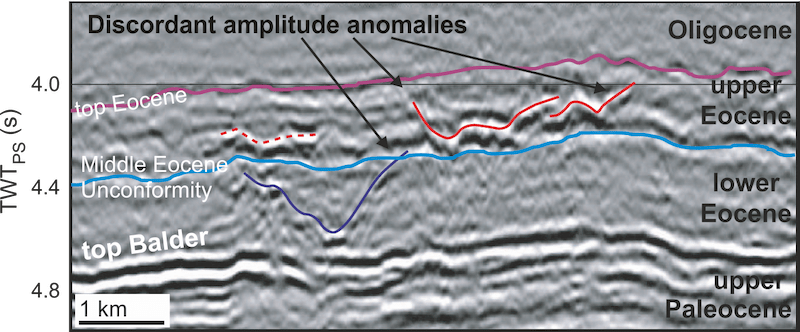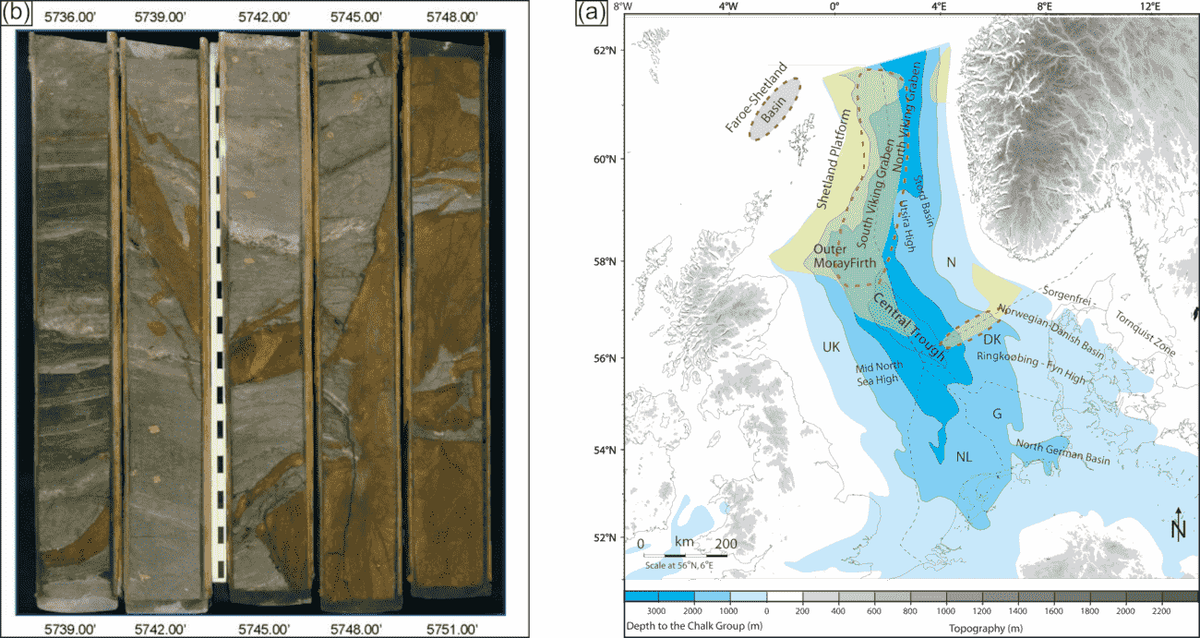Sand Injection Research Group | Phase 1
Principal Investigators: Andrew Hurst and Joe Cartwright
Post-doctoral Research Fellows: Davide Duranti and Mads Huuse
SIRG Phase 1 was a response to a suggestion from Chevron UK who commissioned a two-year research project in 1998 to evaluate the depositional model of the Alba field (UK). Davide Duranti was hired as a post-doc and produced innovative data that proved the presence of extensive volumes of sandstone intrusions. This transformed the understanding of reserve distribution in Alba and directly influenced the locations of development drilling. At the end of the study Chevron proposed creating the SIRG research consortium.
At the outset it was clear that the processes leading to the intrusion of large volumes of sand in reservoir caprocks were relatively poorly understood. It was assumed that large-scale intrusion of sand takes place as fluidised flow driven by the pressure differential between an overpressured reservoir and a less overpressured shallower aquifer or the seafloor. Sand injectites in the subsurface are most readily identified in core where they display crosscutting relations with encasing mudstone. They have often been encountered when exploring for deeper targets or during the appraisal and production phase of depositional reservoirs. Fields associated with sand injectites in core often display anomalous crosscutting events on 3D seismic data. North Sea Paleogene sand injectites are often highly porous with Darcy-range permeabilities, making them effective both as reservoirs and as migration pathways. Recognition and correct evaluation of sand injectites can thus be vital for the appraisal and production of reservoirs affected by remobilisation and injection.
Phase 1 of this multi-disciplinary project documented the subsurface characteristics of remobilised and injected sands and contributed to understanding their causes and consequences. Subsurface data were drawn largely from the Paleogene section of the North Sea, which, at the start of the project, was the only petroleum province in the world where sand remobilisation and injection was identified as a significant target for exploration and development drilling. Two themes were the focus of the project: 1) subsurface data interpretation and analysis and 2) outcrop investigation and validation.
1. Subsurface data interpretation and analysis
A main aim of the project was to synthesise subsurface data already available from reservoir intervals where the effects of remobilisation were known. This included integration of 3D seismic, core, and petrophysical data from North Sea Paleogene reservoirs. Emphasis was placed on establishing criteria for the recognition and characterisation of sand injectites in core, petrophysical logs, and seismic data to determine the extent and character of sand injection.

Seismic section showing discordant geometry emanating from edges and crest of the reservoir. These reflectors represent a wing-like intrusion feature. Seismic data courtesy of WesternGeo.

(a) Extent of Palaeocene sand deposition (semi-transparent yellow) and locations of large-scale sandstone intrusions (dashed red line) in the Paleogene of the northern North Sea Basin. Contours show depth to Upper Cretaceous-Danian Chalk Group. (b) Cores from Gryphon Field, well 9/18b-13 that show discordant margins of intrusions.
2. Outcrop investigation and validation
Complementary outcrop investigation was instigated to evaluate whether and where analogues relevant to subsurface features existed, and on what scale they occur. Field campaigns were based on prior information in the public domain and some expansion into less well documented areas. Outcrop initially selected for their quality and accessibility included the Vocontian Basin (Cretaceous, France), the Santa Cruz Mudstone (Miocene, California), the Great Valley Group (Upper Jurassic to Eocene, California) and the Kimmeridge Clay Formation (Upper Jurassic, Brora-Helmsdale, Scotland). In the Great Valley Group, the Panoche Giant Injection Complex (PGIC) was identified as having significant potential for further research.

